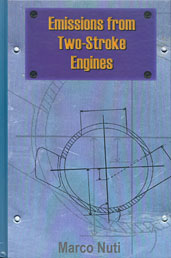Technical Paper
Twenty Years of Piaggio Direct Injection Research to Mass Produced Solution for Small 2T SI Engines
1998-02-01
980760
The problems of Two-Stroke SI engines regarding high fuel consumption and unburned hydrocarbon emissions, both caused by the short circuiting of fresh homogeneous mixture during the scavenge process, are well-known. The progress of Piaggio since 1977 in state-of-art direct fuel injection systems, oriented to development of Hi-Tech solutions for 2T SI engines to overcome the above drawbacks, is analyzed. The analysis includes several streams of research ranging from conventional crankcase scavenged engines with direct solid mechanically controlled fuel injection to solutions with separate scavenging pump with electronically controlled injection units, and from low pressure injectors to air-assisted fuel injection with stratified charge. Each solution is examined with presentation of typical engine parameters and cost data.

